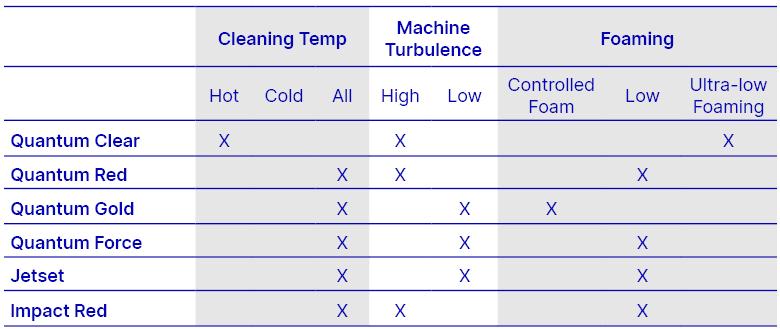Acid detergents: what’s the difference?
16 Feb 2025

Choosing the right acid detergent for your plant type and farm environment will help ensure you are cleaning your milking system adequately and maintaining good quality milk.
Acid detergents remove mineral deposits from all milk contact surfaces of the milking plant and vat. They contain acid, sanitiser and surfactants. The acid dissolves the minerals, which comes from calcium and magnesium in milk and from iron and manganese in water. Acid is usually put through the wash after every milking.
Every milking system is different, so it’s important to look at your milk plant configuration first. Factors such as turbulence, water quality and detergent use rates will have an impact on how well the cleaning system functions.
Plant turbulence.
Turbulence is created by flushing pulsators injecting air and water into the milk line. The forms a turbulent flow of wash water, known as a ‘slug’, to reach the surface at the top of the milk line, receiver can and sanitary trap.
In high turbulence plants with flushing pulsators, a large amount of foam is created mechanically. A low foaming detergent is generally recommended in this plant type as the foam breaks down faster. Our superior acid detergent Quantum Red performs extremely well in plants with high turbulence.
Low turbulence plants may require a high foaming detergent and manually cleaning. Our Jetset and Quantum Gold acid detergents are specially formulated to organically create enough foam in plants with low turbulence to reach all surfaces of the plant with the cleaning water. Areas that may still need to be cleaned manually are the top of the filter cage, vat door and receiver can.
For organic dairies, Quantum Clear is BioGro certified.
Water quality and use rates.
Our detergents are designed to handle challenging water types. Water that has high levels of calcium and magnesium hardness, alkalinity or iron hinder the performance of cleaning chemicals.
Farms with excellent water quality may use Quantum Red at 1 mL per L – always check with your FIL Area Manager first.
Farms with poor water quality will need to alter use rates to properly clean the plant and vat – your FIL Area Manager can provide advice on product selection and use rates for your individual farm conditions.
For more information, contact your local FIL Area Manager who can provide an on-farm assessment and water quality test. You can also check out our locally made Dairy Hygiene range here.


